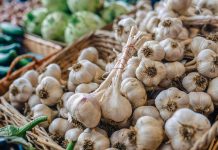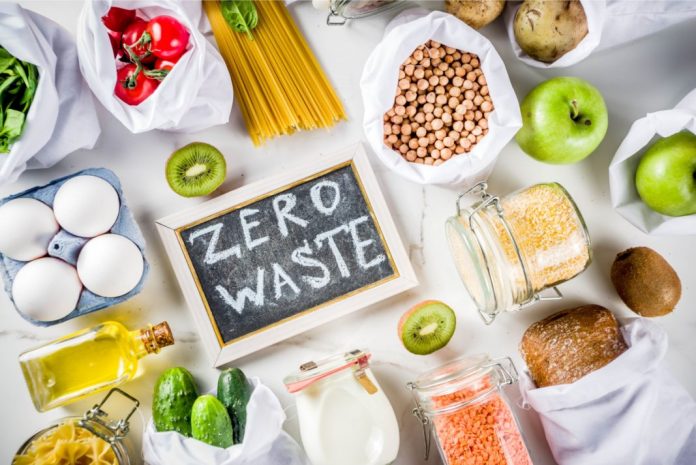Tips
While the normal purchaser isn’t the best danger to the climate, it is as yet critical that individuals find ways to diminish their natural effect.
Discovering approaches to decrease food waste can have a resilient individual effect and assist with making a better food future for all.
Food squander adds to ozone-depleting substances discharges and squanders the water and different assets it takes to develop the food.
While the normal purchaser is anything but a huge natural polluter contrasted with enormous organizations, discovering approaches to decrease food squander for the duration of the day can assist an individual with trying not to add to the issue.
In this article, find out how to diminish food squander in the home, at school, and in a hurry.
1. Avoid buying too much
One of the simplest ways to avoid food waste as a consumer is to buy less.
A packed fridge may look appealing, but it may lead to food waste if the household cannot eat all of the food.
Taking a couple of shorter trips to the grocery store each week rather than one longer trip may prevent people from buying too much food and help cut back on waste.
2. Think twice before throwing food away
While mold is a definite sign that something belongs in the garbage, it is not necessary to throw out foods that are slightly past their prime.
For instance, many greens and vegetables may slightly soften or wilt when they are just past ripe. They still may make excellent additions to soups, smoothies, or baked dishes.
People can use leftover vegetable scraps to make a soup stock. Even stale bread makes toast or breadcrumbs.
“Best before” dates can be misleading — if produce still appears fresh and usable, it is usually fine to eat it.
3. Always make a shopping list
Buying foods that are already in the home can ultimately become another source of waste.
Taking an inventory of the food in the house and making a grocery list before going to the store might help people avoid purchasing unnecessary foods and cut back on potential waste.
4. Organizing the kitchen with FIFO
Organizing the fridge and pantry can help people keep track of what they have at home and help them to identify foods that are ready to eat.
“FIFO” stands for “first in, first out” and is a useful way to organize food at home. Many restaurants and grocery stores use this system to reduce waste, too.
Placing newly bought foods at the back of the cupboard or fridge will encourage people to use the food in the front row first, which will ensure freshness and reduce waste.
For example, if a person keeps lots of tins at home, ensure that the ones closest to their expiry date are at the front of the cupboard and use those first.
5. Store food correctly
Perishable items, such as fruits and vegetables, each have their best way to store to avoid spoilage.
Some tips include:
- keeping the refrigerator below 5°C (41°F)
- storing cooked foods on shelves above raw foods
- storing food in sealed containers
Always transfer leftovers from open cans into a suitable container. Do not store it in the can.
The United States Environmental Protection Agency also notes that some fruits give off natural gases that make nearby foods spoil faster. Storing apples, bananas, and tomatoes apart from other perishables may help keep them all fresh.
6. Make a weekly menu
Making a meal menu for the week may help some people organize their food usage and cut back on waste.
Using online tools or cookbooks to help plan out meals for the week can a person to compile an accurate shopping list.
It may take a few weeks for each household to get the menu right, but having a set weekly menu might help some people reduce the guesswork around meals and avoid wasting food.
7. Keep a log of spoiled foods
Writing down the types of foods that go bad can help a person identify the foods that they can cut back on.
For example, if someone finds themselves throwing out many oranges as they go bad, the solution might be to buy fewer oranges to avoid this spoilage.
Although buying larger bags of produce rather than one or two pieces may seem cheaper, a person will not save money if they routinely throw away part of the contents.
Freezing foods can help preserve them for later use and prevent them from spoiling. Many fresh fruits and vegetables keep well when frozen, extending their shelf life and reducing waste.
Other foods may preserve well in the freezer as well, such as bread, meats, and even some prepared dishes.
Freezing foods that people use less often, such as herbs, is especially helpful. For those looking to eat more sustainably, freezing extra fresh fruits and vegetables when they are in season locally can reduce the need for buying them when they are out of season and come from far away.
9. Eat leftovers
As part of a meal plan to reduce waste, many people choose 1 or 2 days each week to eat any leftovers they may have stored in the fridge or freezer.
This helps reduce waste from individual meals and keeps the fridge tidy.
10. Try out food preservation methods
Properly canning or pickling foods can help to extend their shelf life and avoid spoilage. If a person accidentally buys too much of a particular food, preserving the food in this way can prevent it from spoiling and being thrown away.
Examples include turning apples into applesauce or cucumbers into pickles.
People can pickle almost anything, from onions to eggs. Learn how to pickle foods in this article.
































